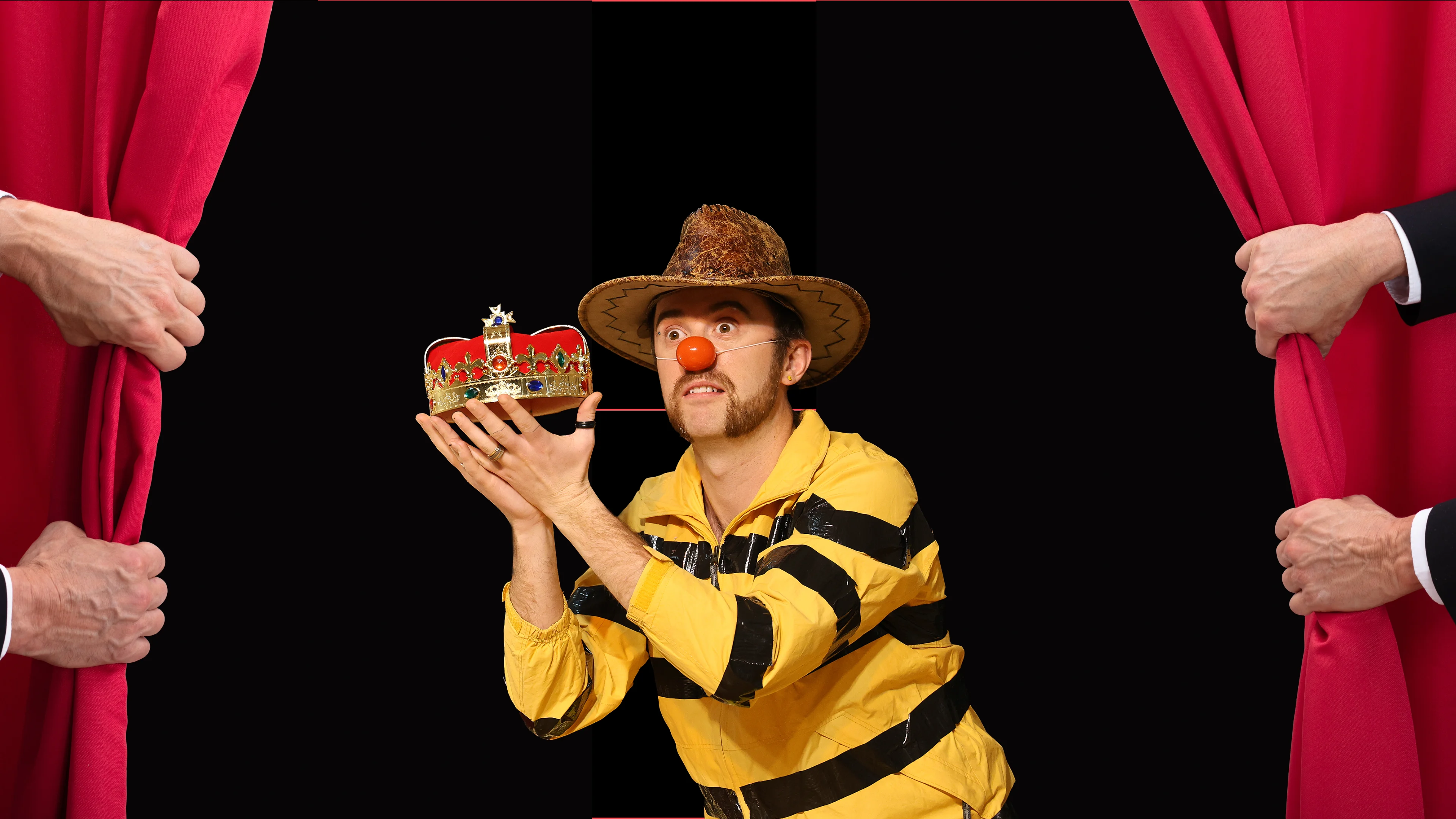
Taster Class In Clown Comedy
Theatre Deli, London
Learn More

Comedy loves a good disaster. Not the real-life, tragic kind — but the small, ridiculous, perfectly human kind. Something goes wrong, a plan crumbles, a confident start turns into an embarrassing mess. We laugh because we recognise ourselves in it. We’ve all been there, but from the safety of our seat, failure is delightful rather than devastating.
Part of the joy is in how it fails. A teetering tower of blocks that collapses the moment someone says “don’t breathe.” A magician’s grand trick that clearly has no chance but they’re still selling it with full Vegas swagger. The inevitability can make it funnier: when we see the train heading for the wall in slow motion, we get to savour the anticipation and the impact.
In clowning, failure isn’t hidden — it’s celebrated. The moment something flops, the performer lets the audience see their reaction. The embarrassment, the surprise, the despair. This vulnerability is gold. And when they bounce back for “one last try” (again, and again, and again) we fall for them harder. Each attempt becomes another invitation to hope, even though we know the fall is coming.
Failure is also about rhythm. A perfect gag can be: try → fail → try again → fail bigger → try again → fail in a completely unexpected way. The escalation, the variety, the absurd commitment to keep going when all evidence says “stop,” is where the laughter lives.
Failure makes comedy human. It turns skill into silliness, authority into idiocy, confidence into chaos. And it gives the audience permission to laugh at life’s inevitable missteps — because if the clown can fail gloriously and keep going, maybe so can we.
